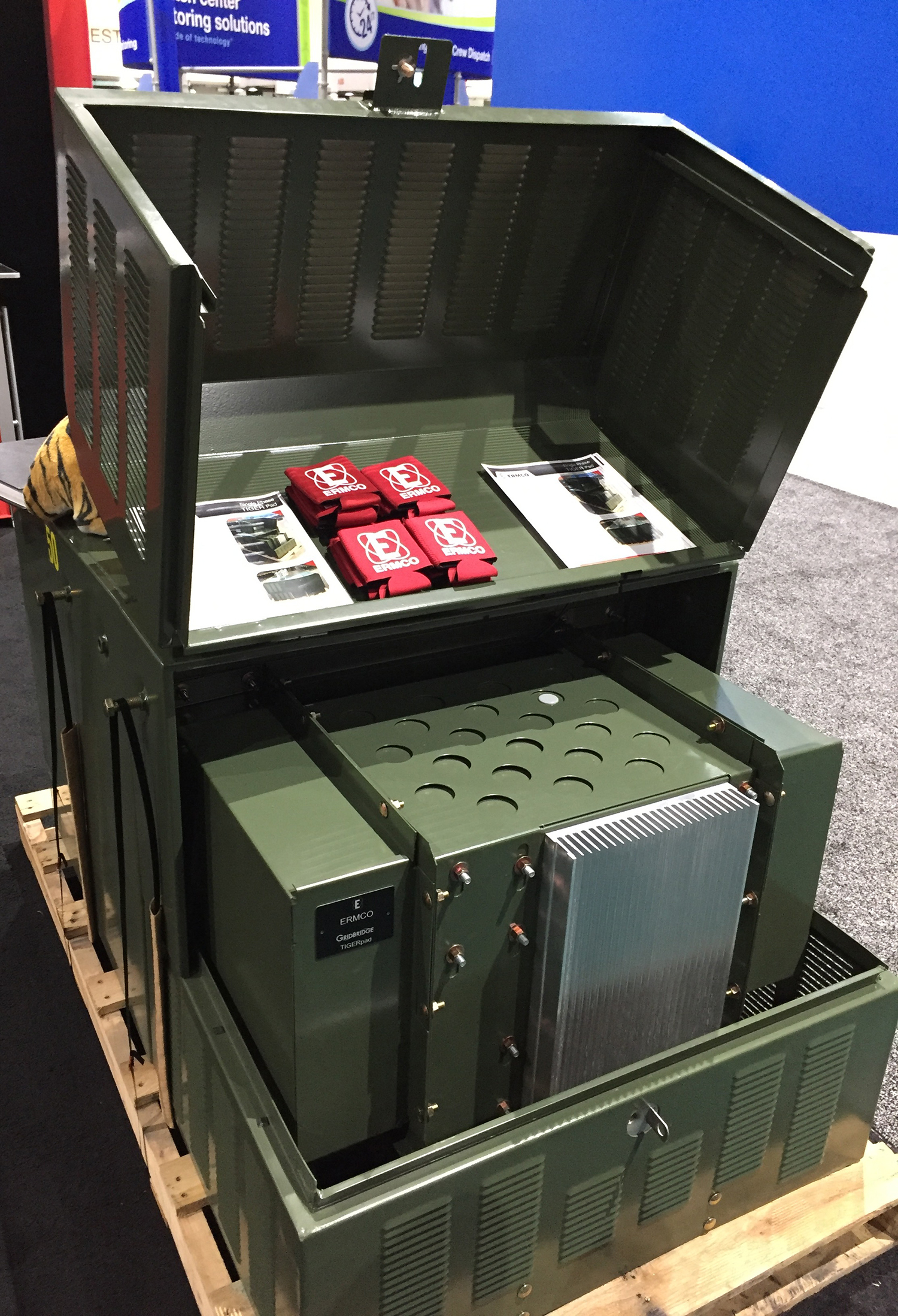The humble transformer has just undergone its biggest transformation in perhaps a century. And it’s all thanks to a device created with electric cooperative input.
That device is the Grid Energy Router, which simultaneously manages voltage and power factor, right at a transformer. North Carolina-based GridBridge reached out to NRECA’s Business and Technology Strategies (BTS) unit, which brought a group of co-ops into the development process.
Now, the Grid Energy Router is part of a transformer called the Total Integrated Grid Energy Router Pad, or TIGER Pad. It has its own co-op connection: TIGER Pad is being manufactured by ERMCO, a wholly owned subsidiary of Arkansas Electric Cooperatives.
“Brunswick EMC put us together. They said, ‘Your vision is aligned. You should look at potentially working together,’ ” said Chad Eckhardt, GridBridge CEO. “And here we are with an integrated product.”
Craig Tennant, ERMCO vice president of sales and marketing, said it “seemed kind of a natural fit” given that GridBridge and ERMCO focus on the co-op market.
“It’s branching out for us into new technology. Instead of staying in our 100-year-old technology, we see the wave of the future for the distribution grid changing and we want to be on the leading edge,” said Tennant.
TIGER Pad transformers have several advantages. For one thing, co-ops can enact localized and transparent load control to save money. They also provide voltage and power quality management that can enable integration of renewables and distributed resources.
TIGER Pad gets a thumbs up from Horry Electric Cooperative, which, for 25 years, had issues with certain feeders in its conservation voltage reduction program.
“This product—for the first time ever—gives us the ability to control that feeder because we can put this product on those one or two members that were blocking the feeder from being controlled,” said J. Reed Cooper, manager of engineering at Conway, South Carolina-based Horry EC.
Eckhardt said unlike most products that can only do X, Y, and Z, this is “flipped upside down,” meaning it can be changed to meet co-op needs.
That’s exactly what happened when Horry EC found the device was difficult to hang on poles. Cooper said “they listened and changed the outside of the box, just so linemen can use, handle it and install it better.”
“It’s that type of working relationship that makes this type of product possible. And you don’t get that a lot of times,” added Cooper.
NRECA is about to launch another field demonstration with Columbia, South Carolina-based Central Electric Power Cooperative in which the Grid Energy Router will be put on poultry houses.
The goal is “to try to lower the demand of those houses without having any impact on the member whatsoever— all installations will be on the utility side,” said Brian Sloboda, BTS program and product line manager.
TIGER pad was on display at NRECA’s 2017 TechAdvantage expo, where Tennant said it attracted attention from co-ops.
“It’s something that is necessary to solve the power quality issues that they’re having on their system,” Tennant said. “And with the coming of distributed generation that’s going to cause more issues.”
Michael W. Kahn is a staff writer at NRECA.
